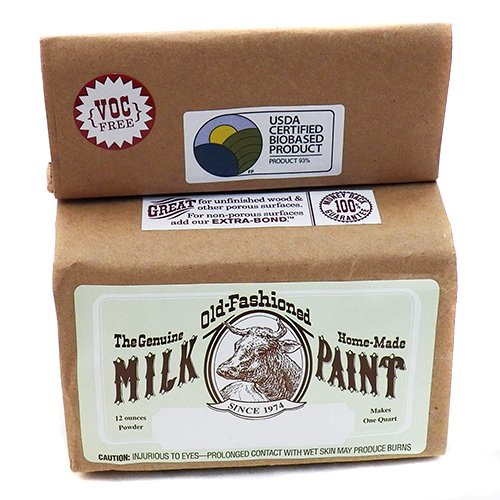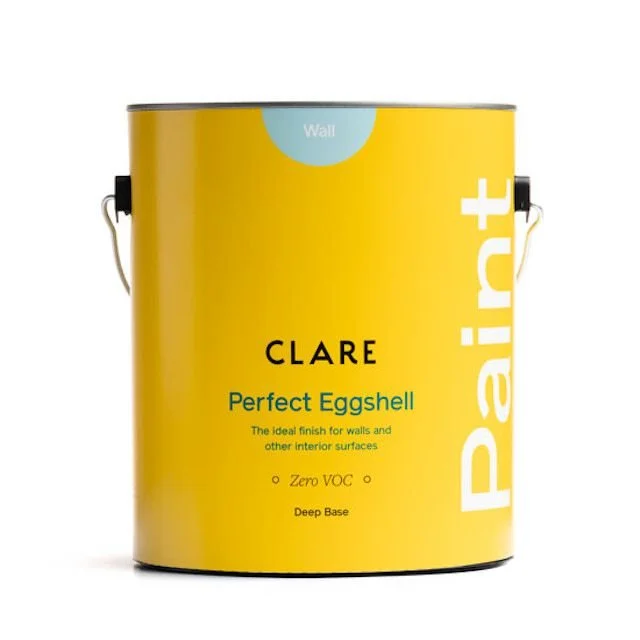TINY OFF-GRID HOUSE ZERO VOC PAINT
Photo courtesy of Getty Images
According to the U.S. Environmental Protection Agency (EPA), organic pollutants can accumulate and become 2 to 5 times higher inside our homes than outside! The U.S. EPA further suspects these Volatile Organic Compounds (VOC’s) are carcinogens. People whom have sensitivities to indoor chemicals and/or odors may dismiss their symptoms of: headaches, depressed immune system, nausea, sneezing, fatigue, breathing problems, skin rash, itching, sore throat, dizziness, muscle pains as over work, hypochondria, seasonal allergies or the flu. Susceptible individuals should reduce and/or remove their exposure to chemicals and VOCs in their homes. Animal companions are also suseptible to indoor chemical allergies.
VOC’s are carbon based chemicals that evaporate (off-gas) from liquids or solids at room temperature. VOCs are emitted by cleaning supplies, furniture, paint, construction materials, cigarette smoke, carpets, pesticides, dyes, fragrances, adhesives, flame retardants . . . The word carbon is what attributes the word “organic” into VOC; but don’t be fooled with any notion of it being natural or healthy. The toxic chemical Formaldehyde, found in some house paints, is one example of a VOC.
However, Some chemical irritants like Ammonia, fungicides, acetone, pigments found in Zero VOC paints are not considered VOCs by the EPA! So a zero VOC paint does not mean it is not toxic!
Combustible heat sources like gas or propane stoves also contribute to VOC pollution of indoor air. However, “Energy Efficient Induction Cooktop Cooking” does not create VOC”s; thus, maintaining indoor air quality. The primary fuel source of an induction cooktop is electrical, which generates a high frequency magnetic field that heats the ferrous cookware.
California CDPH Section 01350 sets standards for environmental and public health considerations for building projects. It is a popular standard used to determine VOC emissions indoor air quality.
VOC’s are measured in grams per liter (g/L). The use of Low VOC paints and stains (< 250 grams per liter g/L) or Zero VOC (< 5 g/L) paint can eliminate VOC emissions and improve indoor air quality; with no polyurethane odor found in traditional paints. But color pigments may introduce VOC in to the inherently VOC free paint.
In 1971, the U.S. Congress banned the use of lead based paint in household furniture, children toys, residential and children focused buildings; like schools and daycare centers. Lead is a heavy metal; the U.S. Government defines lead based paint as any paint, varnish, or surface coating, that contains lead > 1.0 mg/cm2 (one milligram per square centimeter) or > 0.5% lead by weight. Lead is added to paint for durability and vibrant colors. Deteriorating lead based paint can create lead dust that can become airborne and become inhaled. The main routes of contamination are ingestion and inhalation. Even low levels of exposure to lead can be fatal or cause irreversible kidney damage, central nervous system problems plus learning disabilities in small children. Lead can remain in the long bones and teeth for 30 years or more.
For purposes of the air quality research of the Tiny-Off Grid House, VOC free paint will be used in the Tiny Off-Grid House interior and exterior. It is important no paints or pigments containing VOC’s are used, that can off-gas inside the air tight insulated building envelope of the Tiny Off-Grid House.
An air-tight insulated structure prevents the escape of warm conditioned indoor air during the cold season and maintains cooler conditioned indoor air during the hotter season. This reduces the electrical demand needed to maintain a comfortable living environment in the Tiny Off-Grid House. The air and vapor tight structure has to be mechanical ventilated to provide adequate air exchanges while also filtering out dust and allergy triggers from the outside air.
The interior of the Tiny Off-Grid House walls and ceiling will be painted in a Zero VOC reflective white paint to reflect light and open the space.
The paint must be durable enough for the expected traffic of viewers when the Tiny Off-Grid House goes on educational tours after construction. Natural paints contains organic and minerals ingredients. However, natural paints may require special preparation before use but little to no experience for applications due to its organic nature.
Photo courtesy of Kingspor’s Woodworking Shop
Milk paint is made from all natural non toxic ingredients: curdled milk with vinegar and lime with pigment added. Only when ready for use is the powder form finally mixed with water since it is perishable.
Milk paint requires skill with the mixing process. Chalk paint is also a natural non toxic paint but does not require mixing by hand.
Milk and chalk paints are water based and lack the typical chemical smell of latex paint.
Both are susceptible to distress and require a sealant for durability. This may not be the best option for a Tiny House that will be displayed to large numbers of the public.
Photo Courtesy of Sherwin Williams
Sherwin-Williams claims their SuperPaint® Interior Acrylic with Air Purifying Technology has Zero VOC’s “helps reduce VOC’s from potential sources like carpets, cabinets and fabrics.” Formaldehyde Reducing Technology reduces VOC’s while odor eliminating technology reduce common indoor odors of organic origin. Also, “anti-microbial agents help inhibit the growth of mold and mildew” on the surface of the paint film.
SuperPaint is Greenguard Gold Certified. UL Environment, is an international safety certification company and parent company of Greenguard Enviromental Institute (GEI), corporately identified as Greenguard. Greenguard Certified products are tested for over a 1,000 chemicals and VOC emissions. Compared to Greenguard Certified, the Greenguard Gold Certificaton, developed in 2005, as the Greenguard Children and Schools Certification Program for schools, hospitals and daycare centers, has even stricter levels of permissible VOC levels compared to U.S. Federal limits.
The U.S. Federal government sets maximum limits of VOC’s content in paint at 250 grams per liter (g/l) for Flat and 380 g/l for other finishes (Semigloss). Greenguard standards are much stricter setting maximum limits for Low VOC paints at 50 g/l and Zero VOC at less than 5 g/l.
SuperPaint does not contain Alkylphenol ethoxylates (APE’s), Nonylphenol ethoxylates (NPE’s) and Octylphenol ethoxylates (OPE’s) commonly used as surfactants in acrylic paints. According to the U.S. Environmental Protection Agency (EPA) nonylphenol, a byproduct of OPE’s, has “been detected in human breast milk, blood and urine and is associated with reproductive and developmental effects in rodents” and highly toxic to aquatic organisms.
According to Sherwin-Williams “the length of time SuperPaint actively reduces odors and formaldehyde depends on the concentration, the frequency of exposure and the amount of painted surface area.”
A Primer is not necessary unless the undercoat is too vibrant. Be aware, If the paint is added to surfaces without an initial primer layer the surface may absorb the paint requiring a larger volume of paint to complete the entire paint job.
Photo Courtesy of Clare
Clare Zero VOC self priming water based paints are Greenguard Gold Certified. The washable paints are durable, stain and mildew resistant.
Clare is a Woman of color owned sustainable business founded by Nicole Gibbons, an Interior Designer, in 2018.
Although the initial focus of this research was on the chemistry of Zero VOC paints; the sustainable production process is equally important. Clare goes one step further in sustainability; their production facilities uses sustainable eco-friendly production methods. Their production methods focus are on quality, efficiency and low-waste generation. Painting supplies and shipping containers are made of recycled materials. Water conservation techniques are used in the production process of their water based paints. Also, Clare does not provide containers of paint samples; instead, efficient and convenient “Pell & Stick Swatch Kits” are shipped to customers.
Photo Courtesy of Benjamin Moore ECO SPEC
Benjamin Moore “ECO SPEC” 100% Acrylic paints are Zero VOC and zero emissions. ECO SPEC is Certified Asthma & Allergy Friendly by the Asthma and Allergy Foundation of America and Allergy Standard LTD. ECO SPEC is also Green Seal® Certified. Founded in 1989, Green Seal environmental certification programs help companies and government agencies “improve the sustainability of their products.” ECO SPEC uses Zero VOC Gennex® waterborne colorants. Altough ECO SPEC paint is not self-priming, a Zero VOC primer is available and cleanup of tools is easy using only warm soapy water.
* Trade names and images are used for comparison purposes only. No endorsement is intended, nor is criticism implied of similar products not named.
Please share your thoughts or experiences in the Comments section below.




